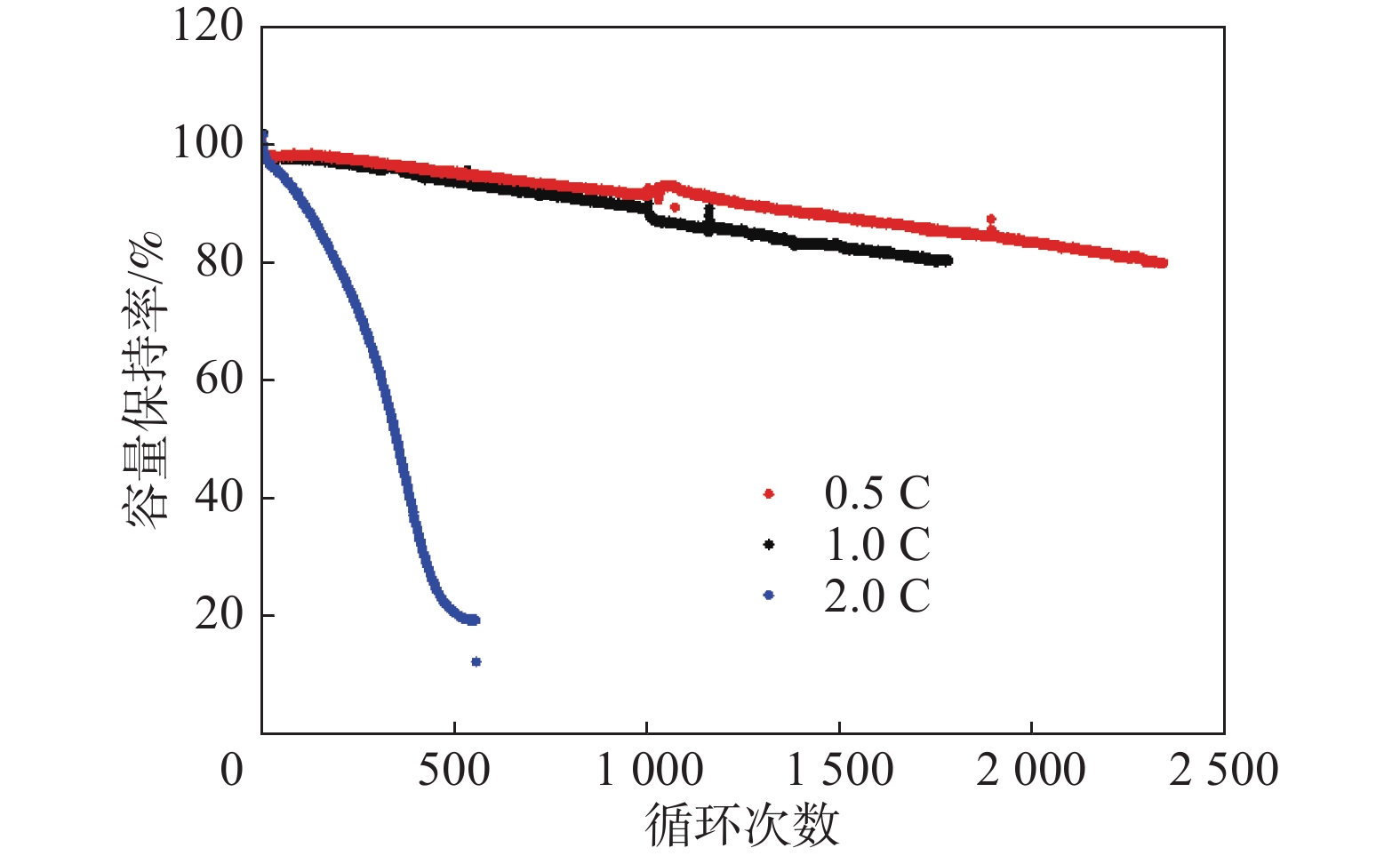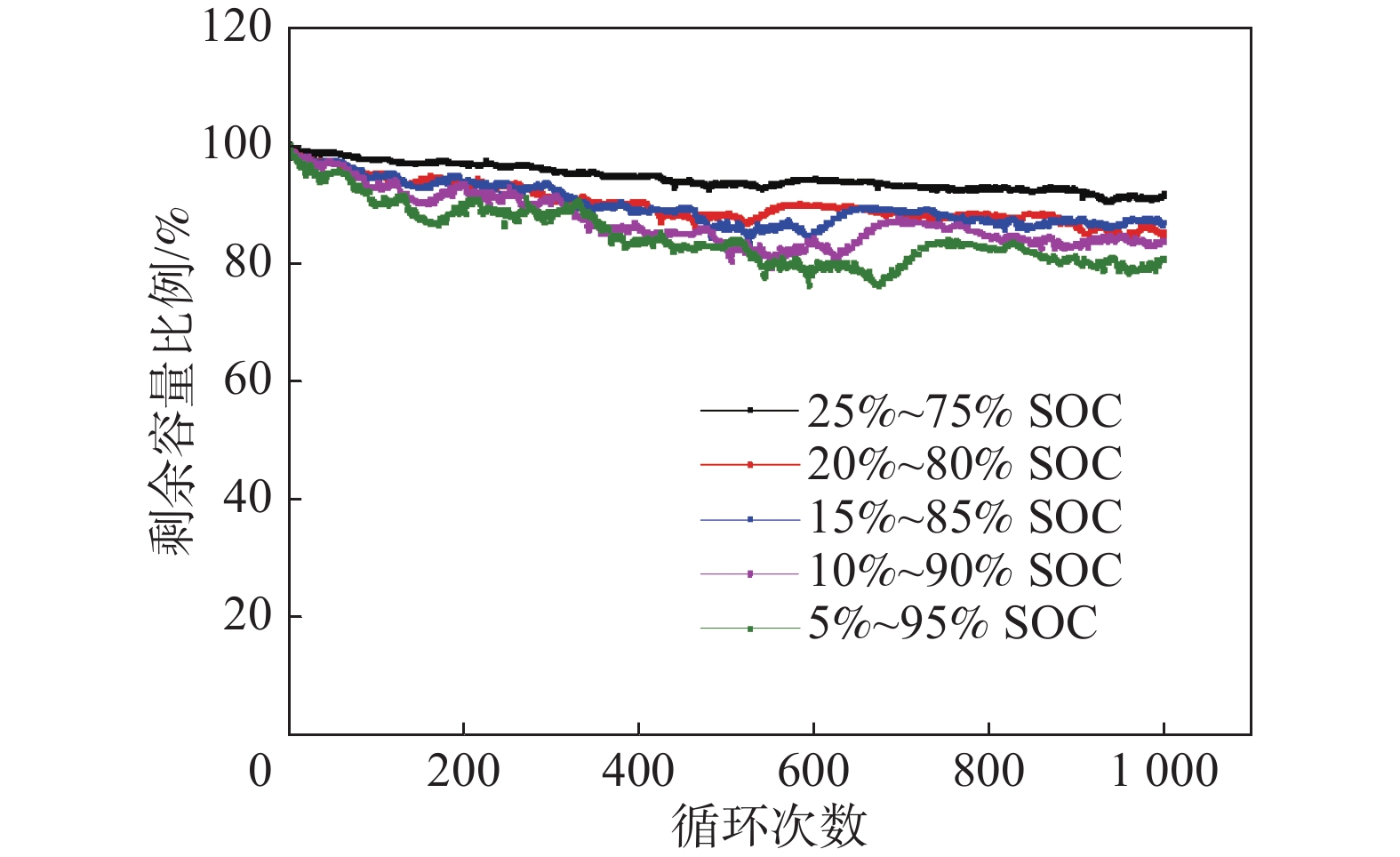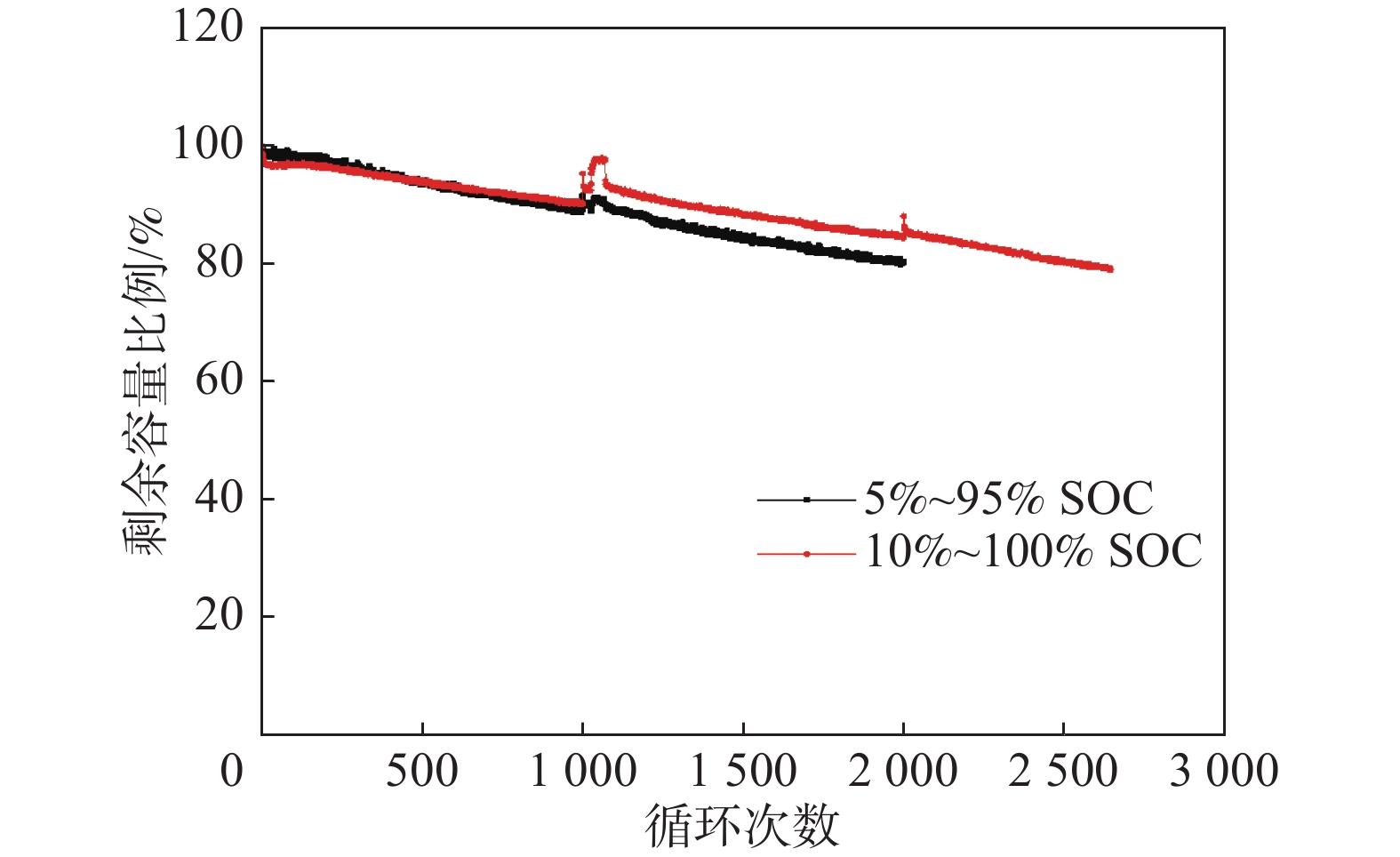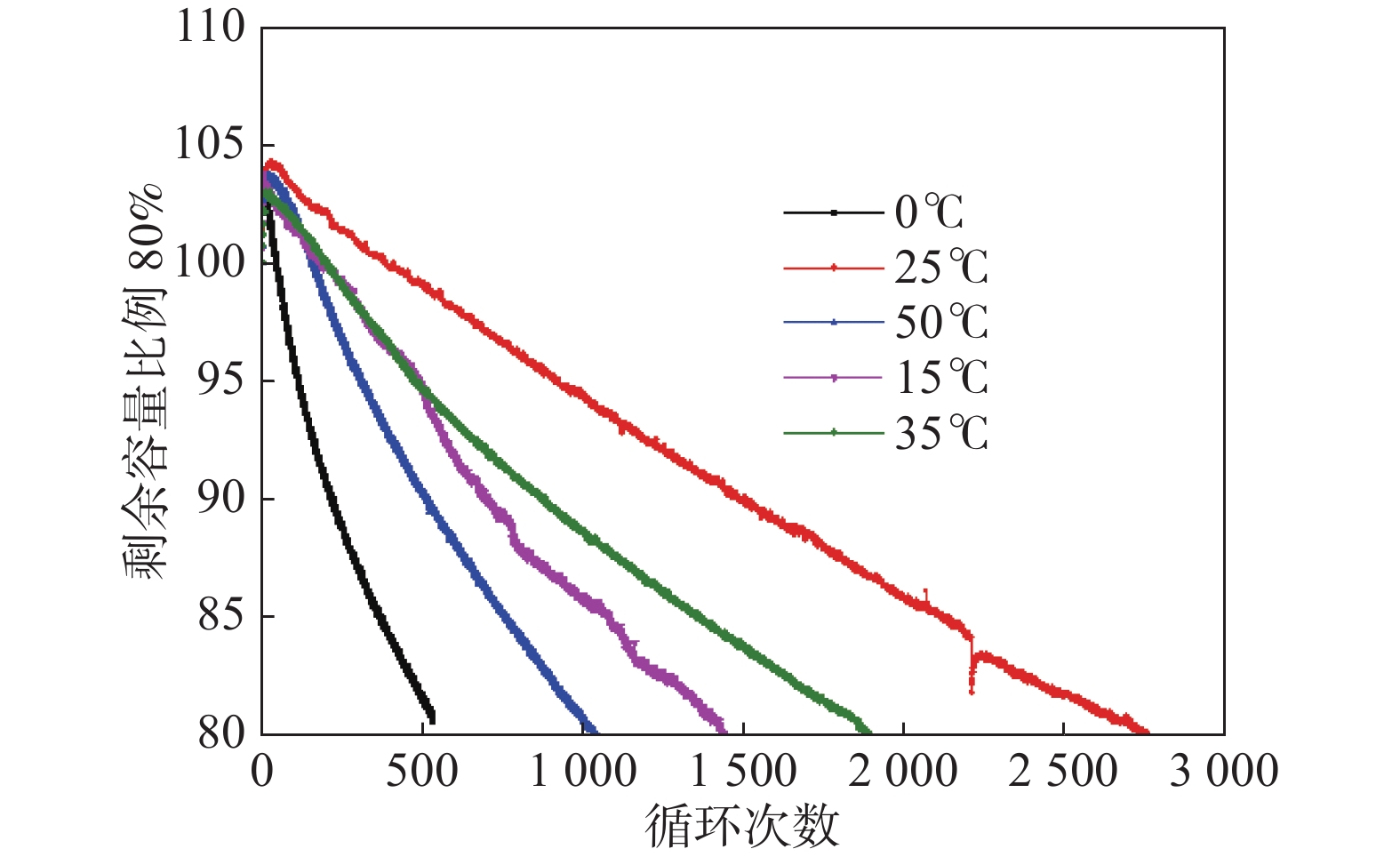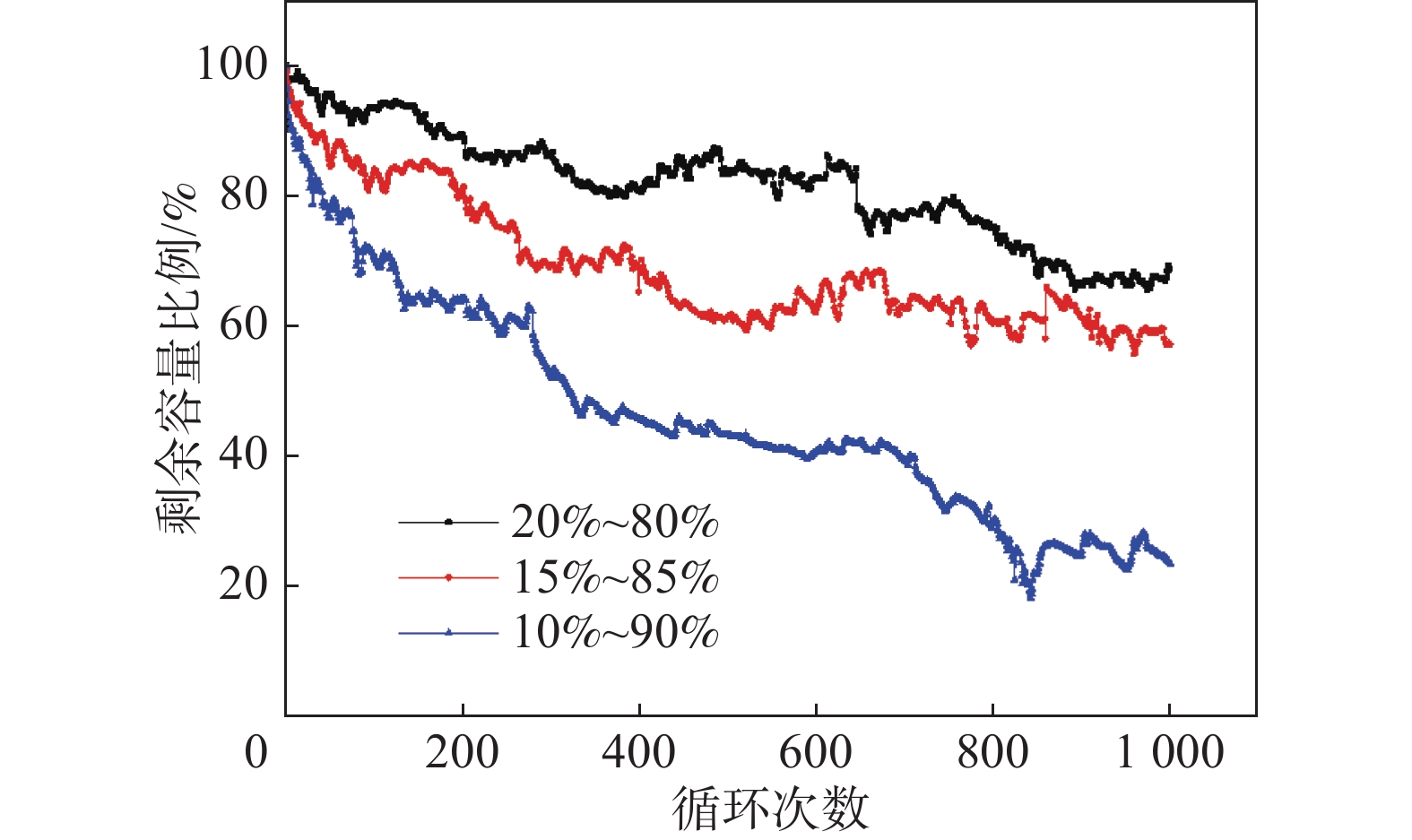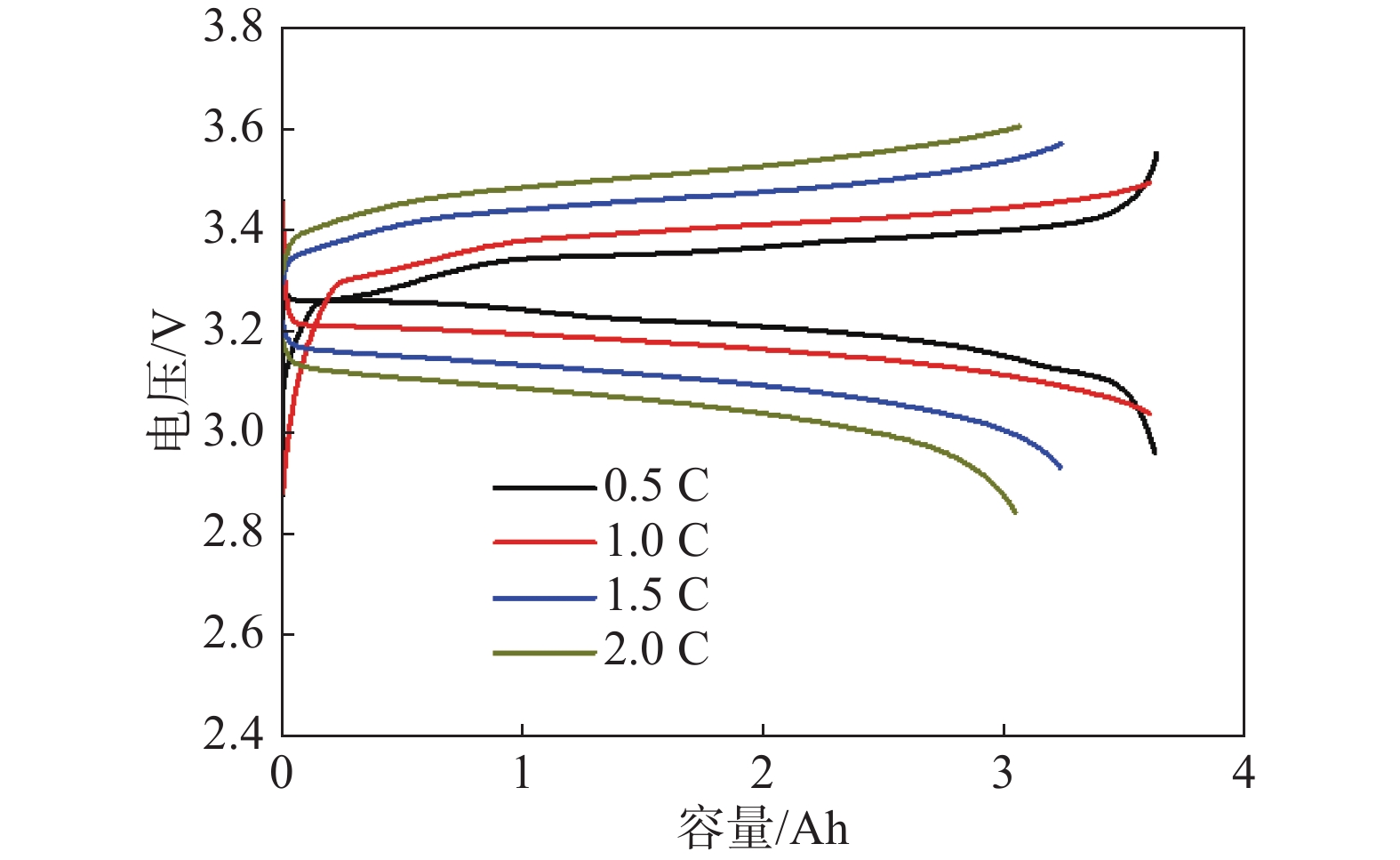-
随着能源和环保问题日益严峻,可再生能源的大规模开发利用成为广泛关注的研究重点和发展方向[1-2]。风力发电、光伏发电装机容量和发电量连年提高,但风光发电间歇性和波动性的特点会对电力系统的稳定性造成冲击,很大程度上限制了可再生能源的开发利用[3-6]。储能技术的应用能够平滑电力波动、调节电网频率,提高电能质量[7-9]。储能技术包括以抽水蓄能[10-11]、飞轮储能[12]为代表的物理储能,以锂离子电池[13]、液流电池[14]、铅蓄电池[15]为代表的电化学储能,以超导储能[16]、超级电容储能[17-18]为代表的电磁储能,以氢储能为代表的化学储能[19-21]等。其中,锂离子电池储能由于具有技术成熟、安装施工周期短、配置灵活、响应迅速等优势,在近年来得到快速发展。我国的锂离子电池储能在近十年来一直保持高速发展。2020年,中国新增装机总量达到1.551 GW,居世界首位,占当年全球新增比例的约33%,其中88%为锂离子电池储能[22]。
虽然在近年来得到快速发展,但锂离子电池的一些缺陷在很大程度上限制了其进一步在电力系统中的大规模应用,包括大倍率充放电带来的放热严重和容量衰减问题、不同温度中工作会造成电池模组中各电芯一致性变差、电池长期工作后的均衡问题等。在用于调频场景时,锂离子电池储能目前通常要以2 C的倍率每天等效充放电8~10次,严重降低了离子电池的使用寿命。由于锂离子电池开发初期的应用场景主要是替代镍氢电池作为小型消费电子产品的电池,因此对于锂离子电池在大容量场景应用的工作性能研究有限。尤其是锂离子电池在电力系统中的大规模应用是从近几年才开始的,具体工况对于储能用锂离子电池实际性能和寿命的影响并不明晰。本研究以磷酸铁锂电池作为研究载体,从充放电倍率、放电深度、工作温度等多个维度探究锂离子电池在储能工况下的工作性能,从而为今后的储能系统容量配置提供借鉴。
-
采用磷酸铁锂电池进行相关测试,电池型号为26650柱状电池,额定容量4 Ah。在开始测试前,先按照标定容量进行1 C充放电循环3次,确定电池实际容量,从而得到准确的倍率测试的充放电电流。电池循环次数初步设定为1000次,依据具体测试情况修改。如电池发生快速衰减至80%,则停止测试;或者当电池循环1000次后容量衰减较少(高于90%),则继续进行循环测试直至容量保持率低于80%。对于不同温度的性能测试,暂定循环次数为1000次。
放电荷电区间:本实验设计SOC(State of Charge,电池荷电状态)下限分别为5%、10%、15%和20%,SOC上限分别为95%、90%、85%和80%。
放电倍率:选定0.5 C、1 C、1.5 C和2 C进行商用电池倍率性能测试。
电池测试温度:标准状况下电池测试温度为25 ℃。在温度对于锂离子电池性能影响的测试中,电芯测试温度范围为0~50 ℃。
-
在荷电区间10%~90%(也就是通常储能系统为充放电各预留10%容量的情况下)进行不同倍率下的充放电性能测试,测试倍率分别为0.5 C(2 h)、1 C(1 h)、1.5 C(40 min)和2 C(30 min),测试结果如图1所示。目前在电动汽车和储能领域,通常规定当电池剩余容量降至初始容量的80%作为电池退役条件。通过测试结果可以看出,随着充放电倍率的提高,锂离子电池的使用寿命有明显降低。在2000个充放电循环后,0.5 C、1 C倍率下的容量保持率分别约为92%、89%。相比之下,在1.5 C倍率下容量保持率降至89%经历了1677个循环。而对于2 C而言,在第1880次容量保持率已经降到80%,达到电池退役要求。按照上述容量衰减趋势,锂离子电池在1 C倍率下工作寿命将达到甚至超过2 C倍率下工作寿命的2倍。
进一步地,将电池工作荷电区间调整至5%~95%。由于1.5 C的工作模式与1.0 C性能接近,且实际应用中很少以这种模式配置电池,因此去掉1.5 C测试组以提高测试效率。在0.5 C的充放电倍率下,电池容量衰减至80%的循环次数为2330次。而将充放电倍率提高至1 C时,循环次数降低至1780次。而将放电倍率提高至2.0 C后,仅在约200个循环后容量就衰减至80%。更为重要的是,在接下来的循环过程中,2.0 C工作的电芯容量成加速衰减趋势,在循环500次左右可用容量就衰减至20%以下,不具备继续工作的能力。而对于0.5 C和1 C的电芯,其容量衰减保持均匀趋势,这对于寿命预测和电芯的继续使用都是非常有利的。
目前,很多储能调频电站都采用2 C模式进行配置,如300 MW发电机组配置的电化学储能辅助调频系统通常为9 MW/4.5 MWh。从设备角度看,9 MW/4.5 MWh和9 MW/9 MWh两种配置方式(0.5 C和1.0 C)的主要差别在于电芯数量造成的电池采购成本差异,同时9 MW/9 MWh对应的储能逆变器成本也更高,导致系统成本会略有提高,其他如设计、运行、接入方式等几乎相同。事实上,采用9 MW/4.5 MWh的配置方式比9 MW/9 MWh通常仅能节约30%的初始投入,但9 MW/9 MWh的配置却能够获得超过3倍的使用寿命提升,从这一角度看,适当提高锂离子电池配置容量能够有效延长使用寿命、降低系统周期度电成本,提高盈利能力。同时,从图1和图2的测试结果可以看出,放电深度对于电池使用寿命同样有着显著影响。尤其是对于大倍率工作(2 C)电芯,相比于5%~95%荷电状态下工作,仅通过牺牲10%的使用寿命(工作荷电区间10%~90%)即可获得上千次的使用寿命。更为重要的是,大倍率放电产热明显,会导致电池不一致性,增加甚至引起电解液分解、电池胀气,引发安全事故。
-
本研究中分别测试了26650型磷酸铁锂电池在0.5 C、1 C、1.5 C和2 C下在不同放电深度(荷电区间)的循环性能。总体而言,随着放电深度变小,电池在各放电倍率下的容量保持率均有提高。不过值得注意的是,电池放电倍率提高至1.5 C和2 C以上后,电池工作极化增大,难以进行放电区间的精确控制,产生实际容量计量偏差。
在0.5 C下,分别在荷电区间5%~95%、10%~90%、15%~85%、20%~80%、25%~75%。本产品选用的商用26650电芯具有非常优秀的电池一致性,0%~100%荷电区间工作的放电初始容量均能够达到4 Ah(4000 mAh)。在相同条件下,分别选择一致性良好的电芯在5%~95%、10%~90%、15%~85%、20%~80%、25%~75%荷电区间进行1000次循环,测试结果如图3所示。在1000次循环后,上述测试剩余容量比值分别为80.6%、83.8%、86.8%、85.3%和91.8%。从总体趋势看,在小倍率放电时,电池在各放电区间均呈平稳衰减模式,且放电深度越大、容量衰减越快。
将电池工作倍率提高至1 C,在5%~95%和10%~90%下测试锂离子电池的持续循环性能直至电池容量衰减至初始容量的80%。从图4的测试结果可以看出,电池在荷电区间5%~95%的容量衰减明显更快,在第2010个循环时,容量衰减至初始容量的80%。而在10%~90%荷电区间工作时,循环次数增加至2650次,循环寿命提高了30%。
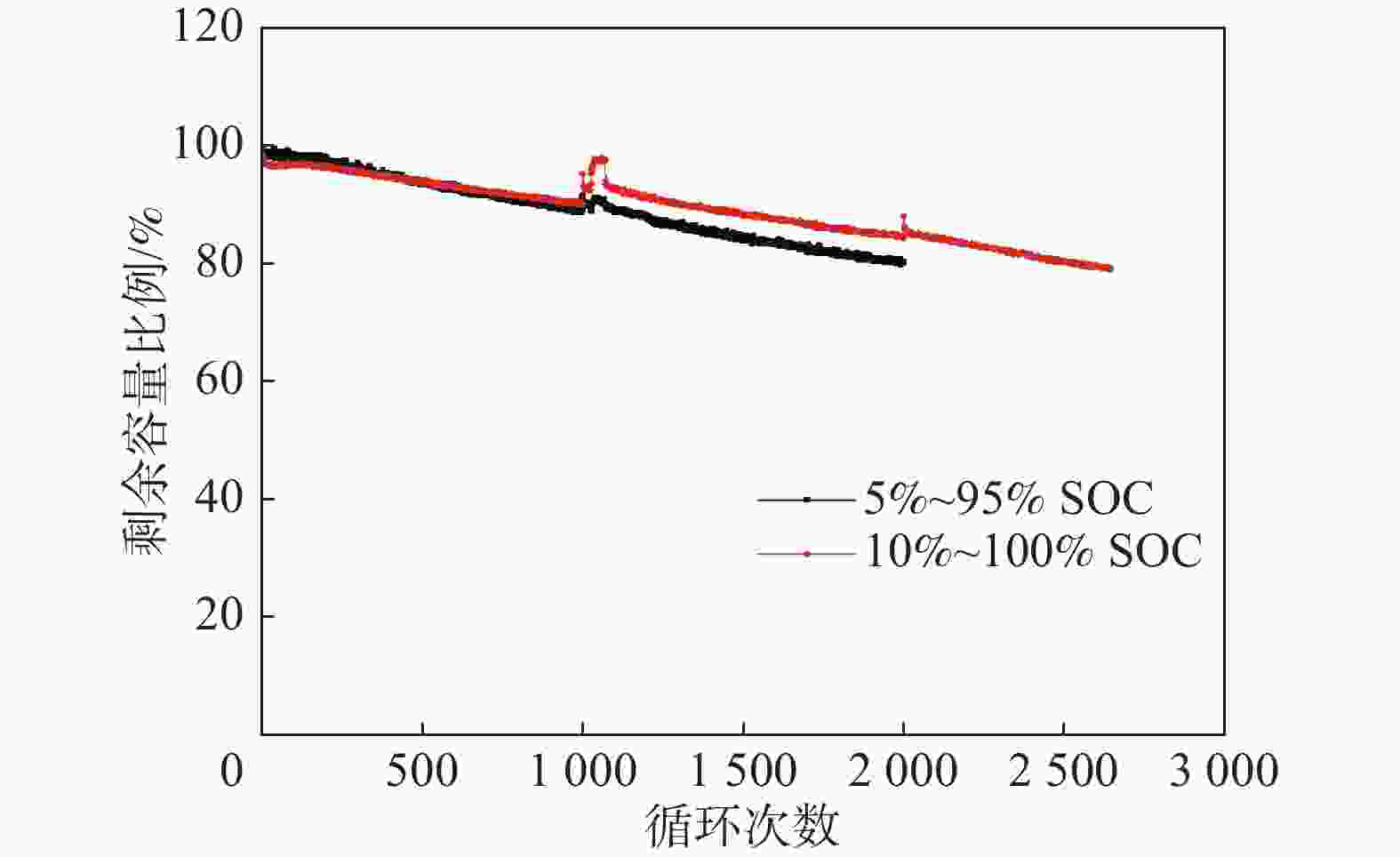
Figure 4. Cycle performance of lithium-ion batteries cycling to 80% remaining capacity in the SOC range of 5%~95% and 10%~90% at 1 C
此外,本研究同样测试了电芯在1.5 C和2 C下在不同荷电区间的循环性能,但测试结果并不理想,难以测得电池实际容量。主要原因为:在高倍率下,电池的放电平台(电压-容量关系)会与低倍率下有较大偏差,且电池容量衰减非常迅速,难以表征电池实际具体充放电量。
-
为了验证工作环境温度对于锂离子电池工作性能的影响,本研究分别在0 ℃、15 ℃、25 ℃、35 ℃和50 ℃下测试锂离子电池在1 C倍率下循环工作性能,测试结果如图5所示。
对于锂离子电池而言,当电池处于低温时电解液黏度变大,锂离子的移动受阻,负极表面锂离子的嵌入脱出打破平衡状态,会有一部分锂离子沉积在负极表面造成析锂现象,从而造成了电池容量的损失;而当电池处于过高温环境工作或储存时电解液及活性物质的活性较大,电池内部会有副反应的发生以及电解液的分解引起电池失效。
本研究通过恒温箱精确控制电池工作时的环境温度,以电池额定工作温度25 ℃为标准值首先测试电池的循环性能。当电池容量衰减至80%初始容量时,电池的循环次数为3760。值得注意的是在2200次左右的循环中,发生容量异常衰减情况。此处异常是由于设备维护检查时恒温箱临时断电导致。不过在测试时恰好是北方冬季,室内温度不足20 ℃。此处异常也体现出工作环境温度控制对于锂离子电池储能寿命的重要性。
将工作温度降低至0 ℃,发现电池循环寿命急剧降低,仅循环不到540次可逆容量就降低至初始容量的80%。低温会导致电解液黏度降低,影响锂离子在电极材料中的脱嵌,导致负极表面金属锂的沉积和锂枝晶的产生。而当温度升高至50 ℃时,衰减至80%的循环次数仅有1254次。不仅如此,作为高能量密度、高活性有机体系,锂离子电池在高温工作时还会发生电解质分解产生可燃气体,导致电池胀气甚至引发安全事故。
将电池工作温度适当趋近额定工作温度,分别在15 ℃和25 ℃测试循环性能。发现电池寿命依然较额定温度25 ℃的循环性能有明显下降。
从上述测试可以看出,锂离子电池在工作过程中对于环境温度是较为敏感的,对于工作温度的严格、精确控制非常重要:一方面,高于或低于额定工作温度会导致电池使用寿命降低,影响系统周期经济性;另一方面,虽然偶然温度变化导致的容量异常在温度调至正常值后会有所恢复,但若经常发生这种异常或者储能柜/集装箱长期存在温度场分布不均则非常容易造成电池一致性严重下降。
在本研究中,还测试了不额外控制温度时,电池在室温条件下的循环情况,结果如图6所示。该测试是在哈尔滨的室内进行,时间为9月至次年1月,室内温度在15~30 ℃波动。从测试结果可以看出,随着放电深度的变小,电池的剩余容量明显更高。更为重要的是,在各种放电区间,电池放电容量对于温度都是极为敏感的。最为明显的是电池在10%~90%循环的电池在第800次循环附近明显的容量下降。造成这一结果的原因主要是短时间的冬季供暖不足造成室内温度降至16 ℃左右。在供暖恢复后,电池容量由有明显上升。在一个储能系统中通常包含几千甚至上万电芯,这种情况下工作温度的不一致即使没有引发电池胀气等问题直接导致电池失效,也会造成电芯在循环过程中各电芯间的不一致性增加,而严重的不一致性又会导致部分电芯的过充或者过放电,从而造成电池电解液分解、电池容量跳水甚至引发失火等安全问题。
-
通过充放电曲线研究电池在不同倍率下的性能。图7为在5%~95%荷电区间循环时,26650型磷酸铁锂电芯的充放电曲线。从图中可以明显看出随着放电倍率的提高,充放电曲线间的差值明显增大,意味着极化的增大。对于理想的锂离子电池充放电曲线,应具有较为稳定、斜率较低的平台区域,这一部分是贡献容量的主要部分,以及充、放电末期电压快速升高或降低的斜线区域。对于低倍率放电(0.5 C)而言,其平台区域和斜线区域分化明显,且平台区域所占放电容量可以占总容量的85%以上。在通过充放电截止电压的设计设定充放电容量(荷电区间)时,工作截至电压对应的区域主要为斜线区域,不仅容易设置,还可以认为电化学反应进行的较为完全。而当充放电倍率提高时,由于电化学反应和浓差极化增大,充放电曲线间距明显增大,且充放电曲线平台去斜率绝对数值变大,这就导致在通过工作截止电压控制充放电容量(荷电区间)时误差变大。
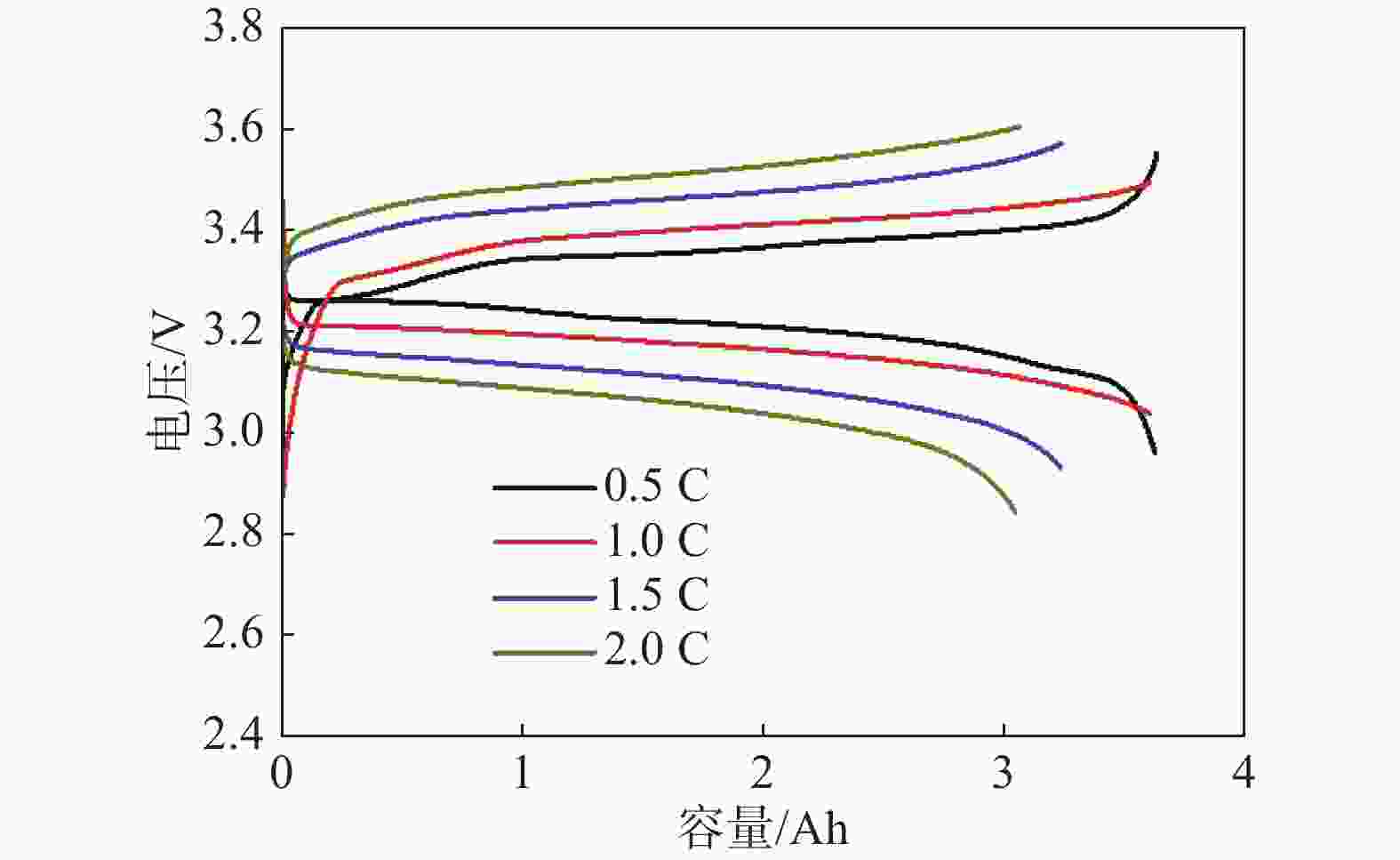
Figure 7. Charging and discharging curves of 26650 lithium iron phosphate cell operating at SOC range of 5%~95%at different rate
更为重要的是,随着充放电深度的增加,充放电曲线间的电压差(即极化程度)会进一步变大,且放电倍率越高,极化程度增加越明显,这就导致充电平台进一步提高和放电平台进一步降低,甚至超过设定的充放电测试工作范围。因此会造成第3.2节测试中高倍率循环容量快速衰减甚至无法测到容量的现象。此外,在电力系统中的工作的电池容量通常以Wh为单位计量,也就是在Ah容量上再乘以电池电压。随着充放电倍率的提高,充电电压会升高而放电电压将会降低,这将导致充放电容量数值的进一步降低和充放电效率的下降。结合前文工作倍率对放电容量的影响和本节充放电倍率对于电压的影响测试结果,建议在锂离子电池配置和实际使用过程中应尽可能避免1 C以上的大倍率充放电工作。
-
在本研究中以26650型磷酸铁锂电池为研究对象,测试了充放电倍率、电池工作荷电区间、温度等参数对于锂离子电池工作性能的影响,得到如下结论:
1)锂离子电池作为高能量密度化学单体,其工作性能对于工作环境是极为敏感的,充放电倍率、荷电状态、工作温度等参数均有可能显著影响锂离子电池的实际工作性能。
2)放电倍率对于锂离子电池实际容量具有较大影响。这种影响在低倍率(0.5 C、1 C)工作时差异较小,但当工作倍率提高至2 C时,电池容量衰减极为明显。因此应尽可能避免锂离子电池长时间处于大倍率工作状态。在放电功率相同的情况下,1 C配置锂离子电池虽然会在电芯配置方面较2 C配置成本翻倍,但实际工作寿命要延长超过3倍,从全寿命周期看反而会降低使用成本。
3)虽然会牺牲一部分使用容量,但适当预留充放电容量有利于提高锂离子电池的使用寿命。
4)锂离子电池工作性能对于温度极为敏感,偏离额定温度(无论高低)均能引起电池容量发生明显偏差。若长时间无法保持工作温度的稳定,则偏差将会累计叠加,造成电池不一致性提高,甚至引发安全问题。
建议:(1)将锂离子电池实际用于储能时,应尽可能避免长期进行大倍率工作(1 C以上);(2)适当预留一部分容量,有助于延长电池使用寿命,同时还能够预留容量作为应急保障电源或临时吸收低价谷电;(3)严格控制锂离子电池实际工作温度。
Influence of Service Conditions on Electrochemical Performanceof Lithium-Ion Batteries
doi: 10.16516/j.ceec.2024.2.13
- Received Date: 2023-05-15
- Rev Recd Date: 2023-08-14
- Available Online: 2024-03-25
- Publish Date: 2024-03-26
-
Key words:
- energy storage /
- lithium-ion battery /
- service condition /
- electrochemical performance /
- service life
Abstract:
| Citation: | XIN Tian, GAO Xiaotian, XIAO Kai, et al. Influence of service conditions on electrochemical performanceof lithium-ion batteries [J]. Southern energy construction, 2024, 11(2): 139-145 doi: 10.16516/j.ceec.2024.2.13 |


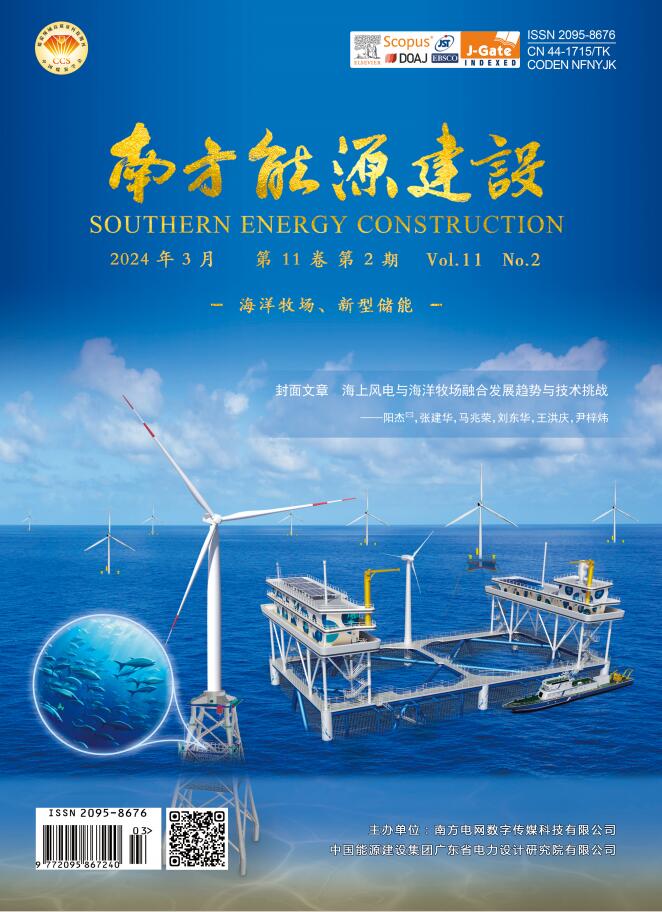

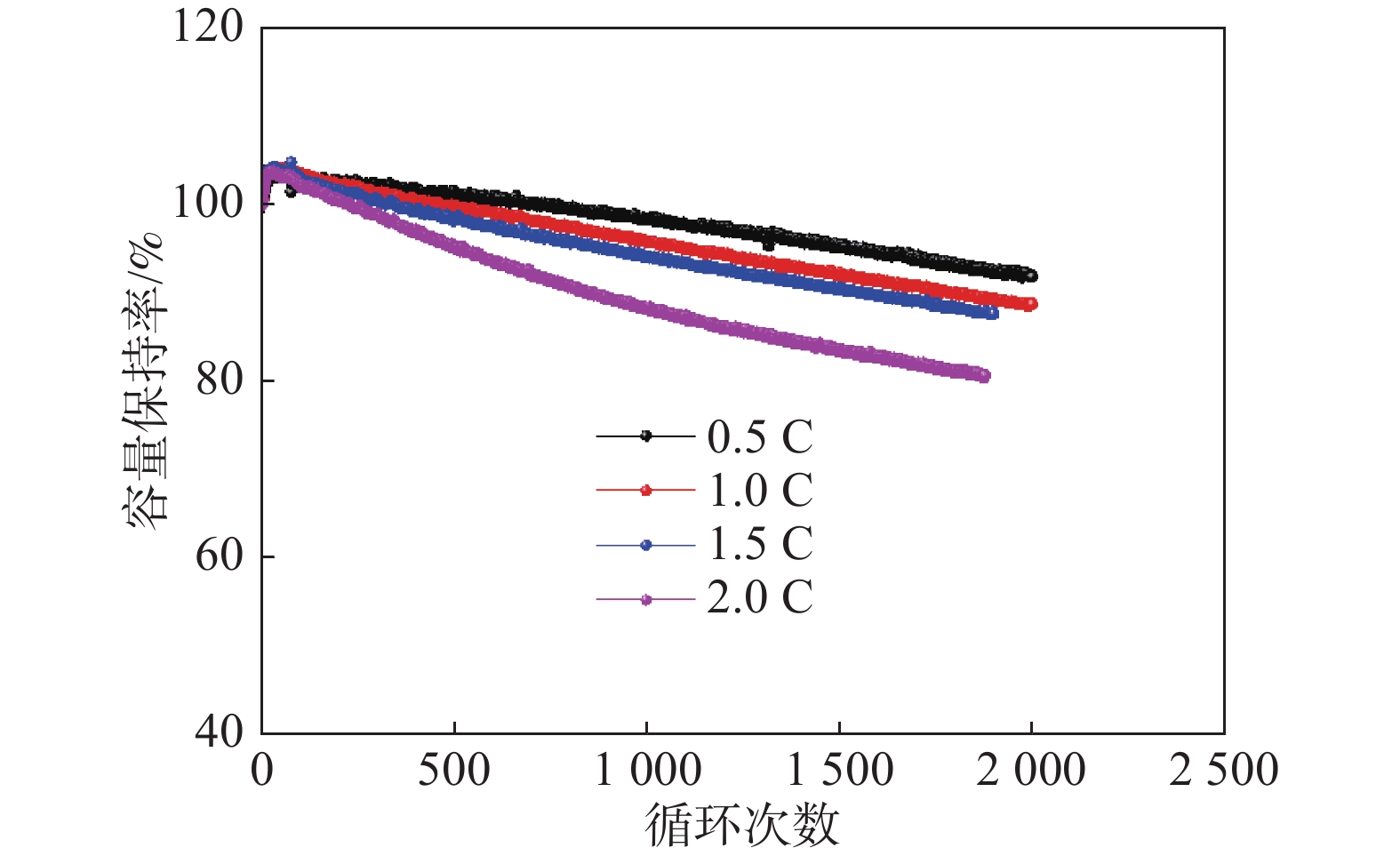

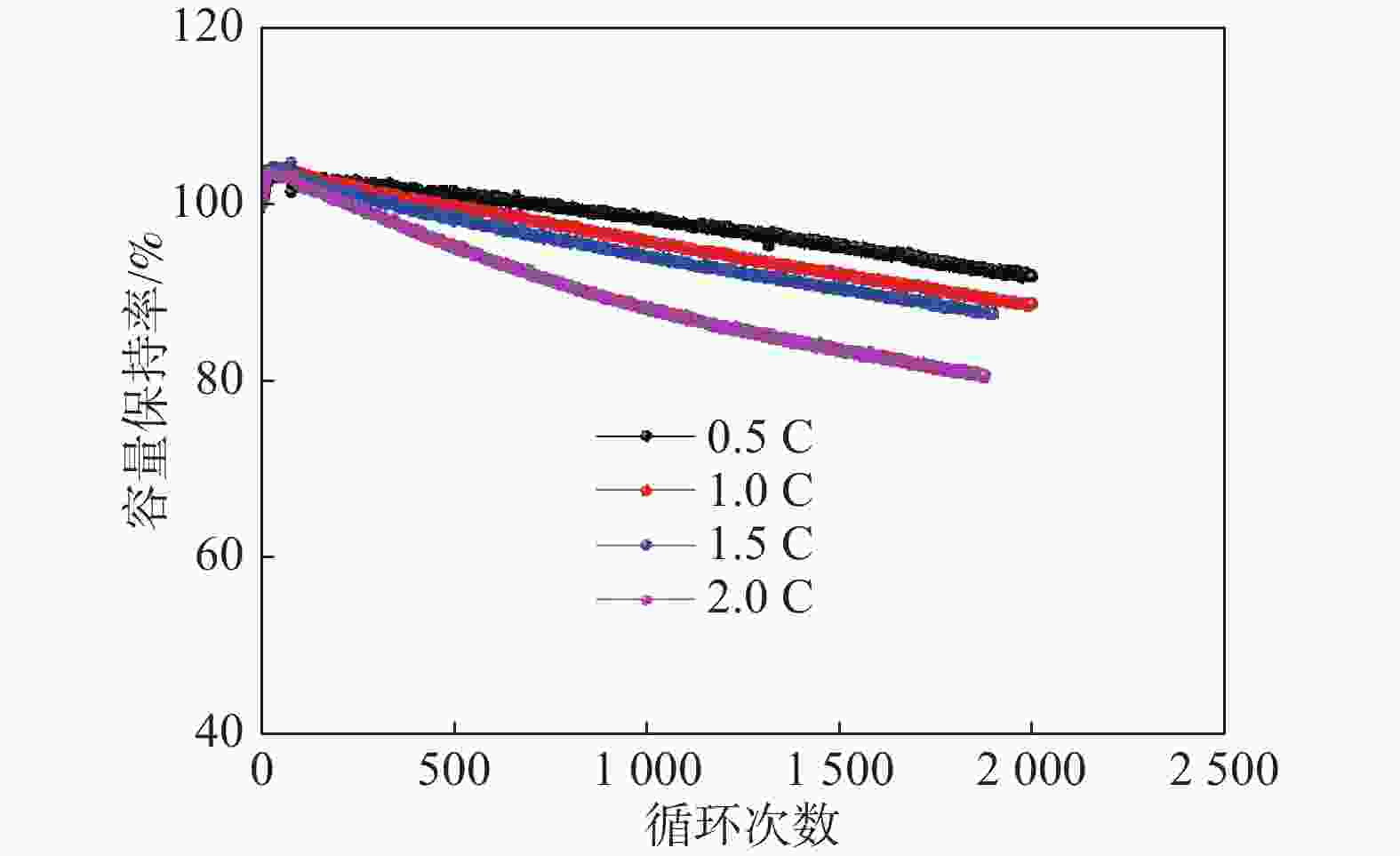
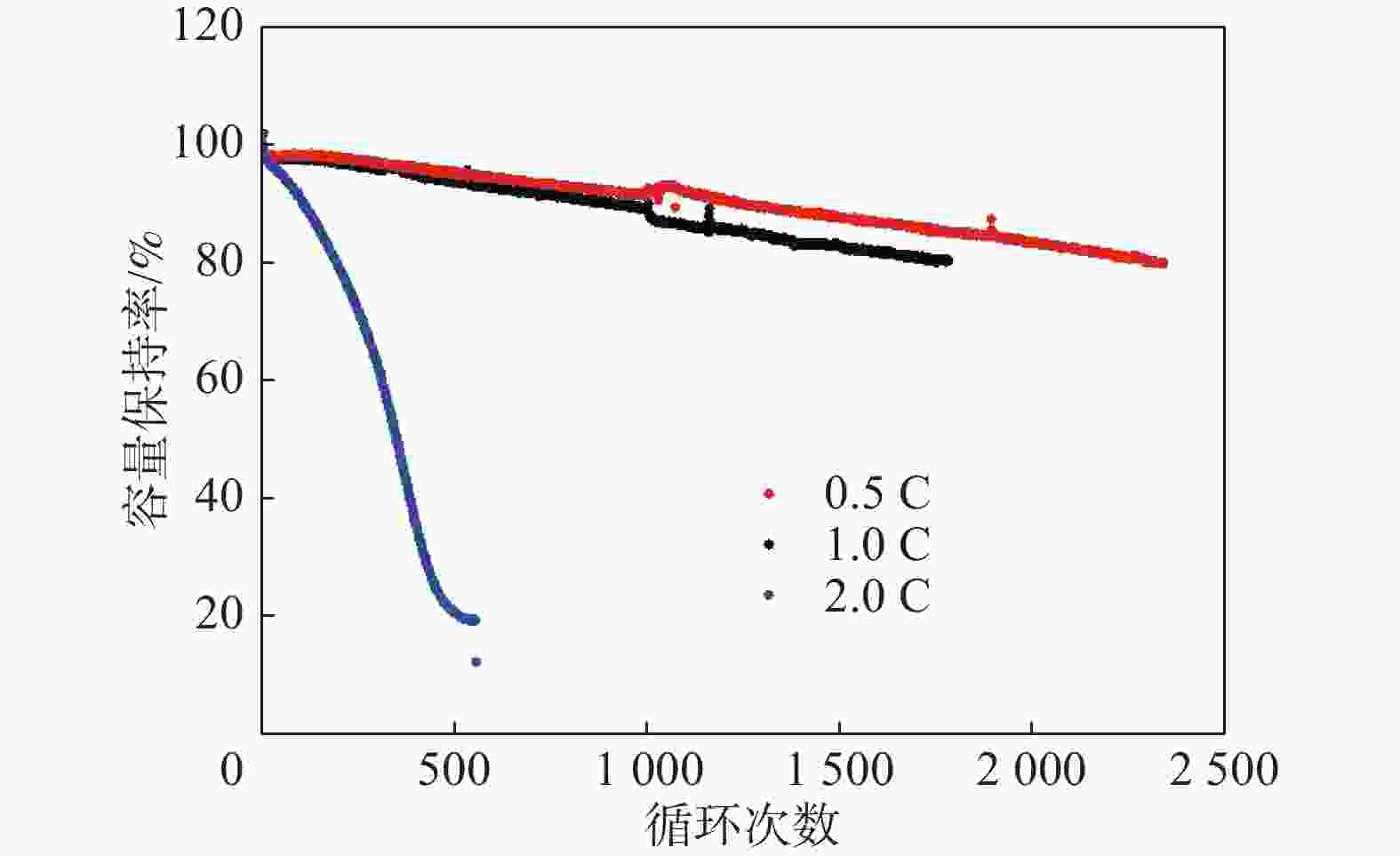
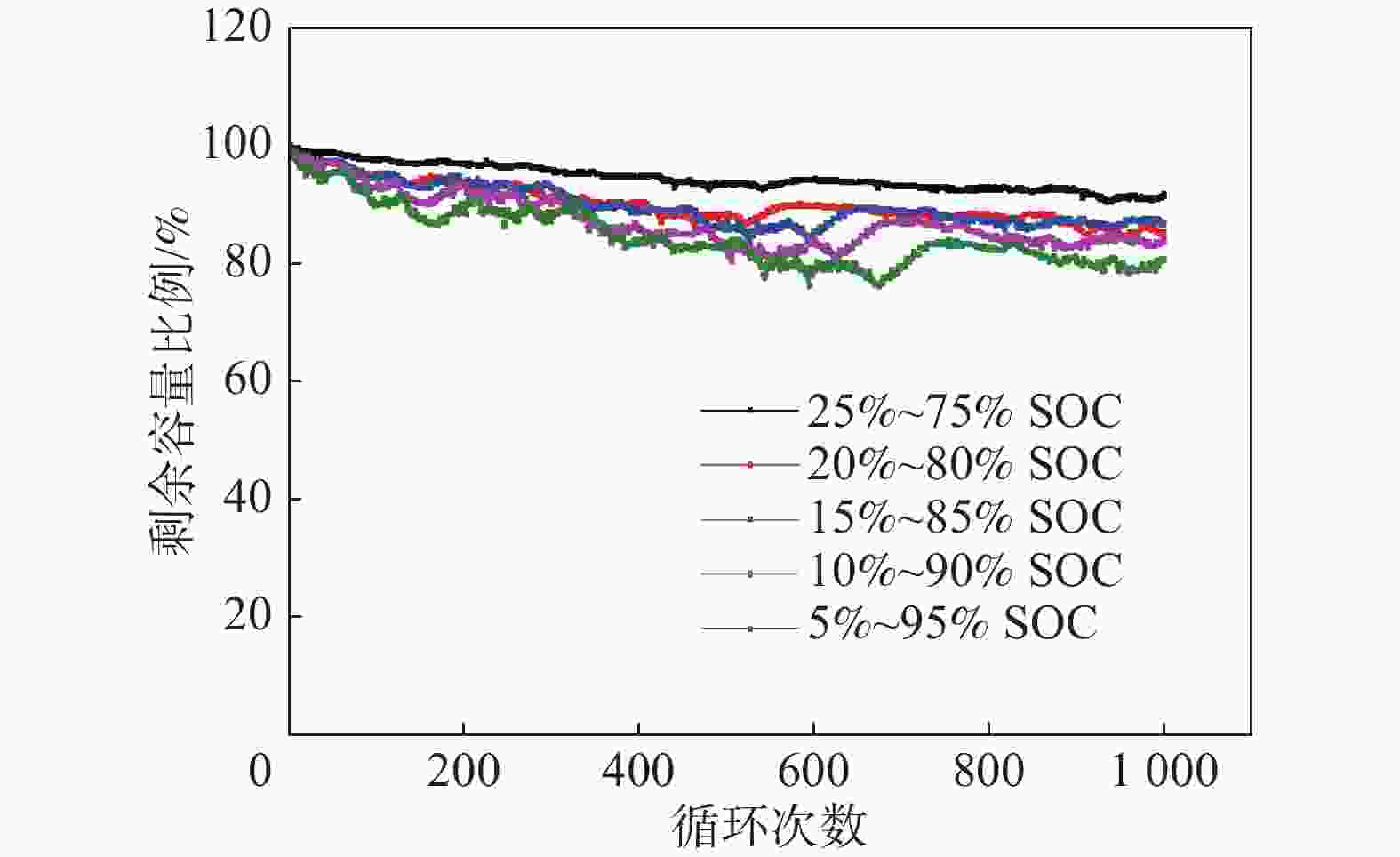
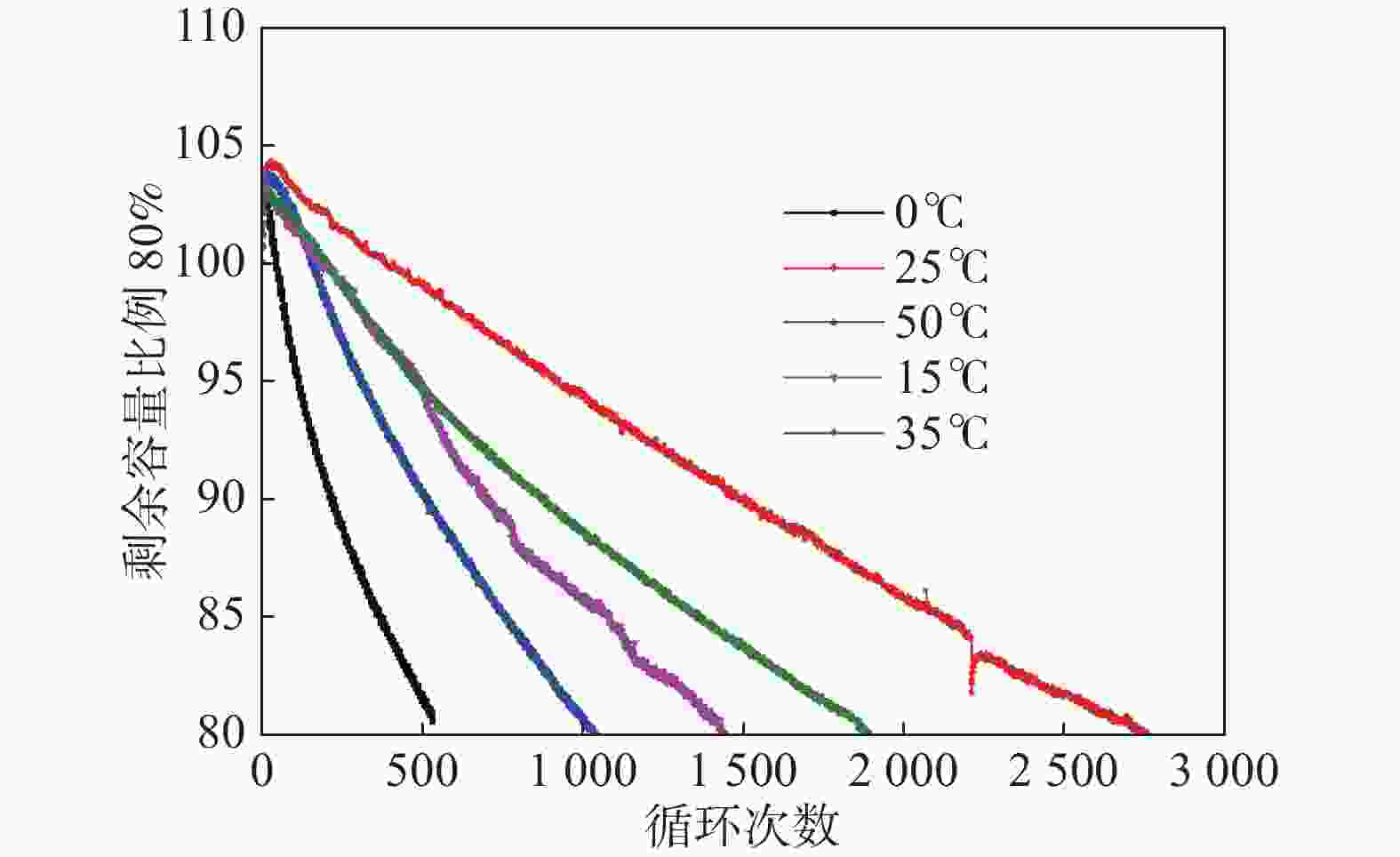
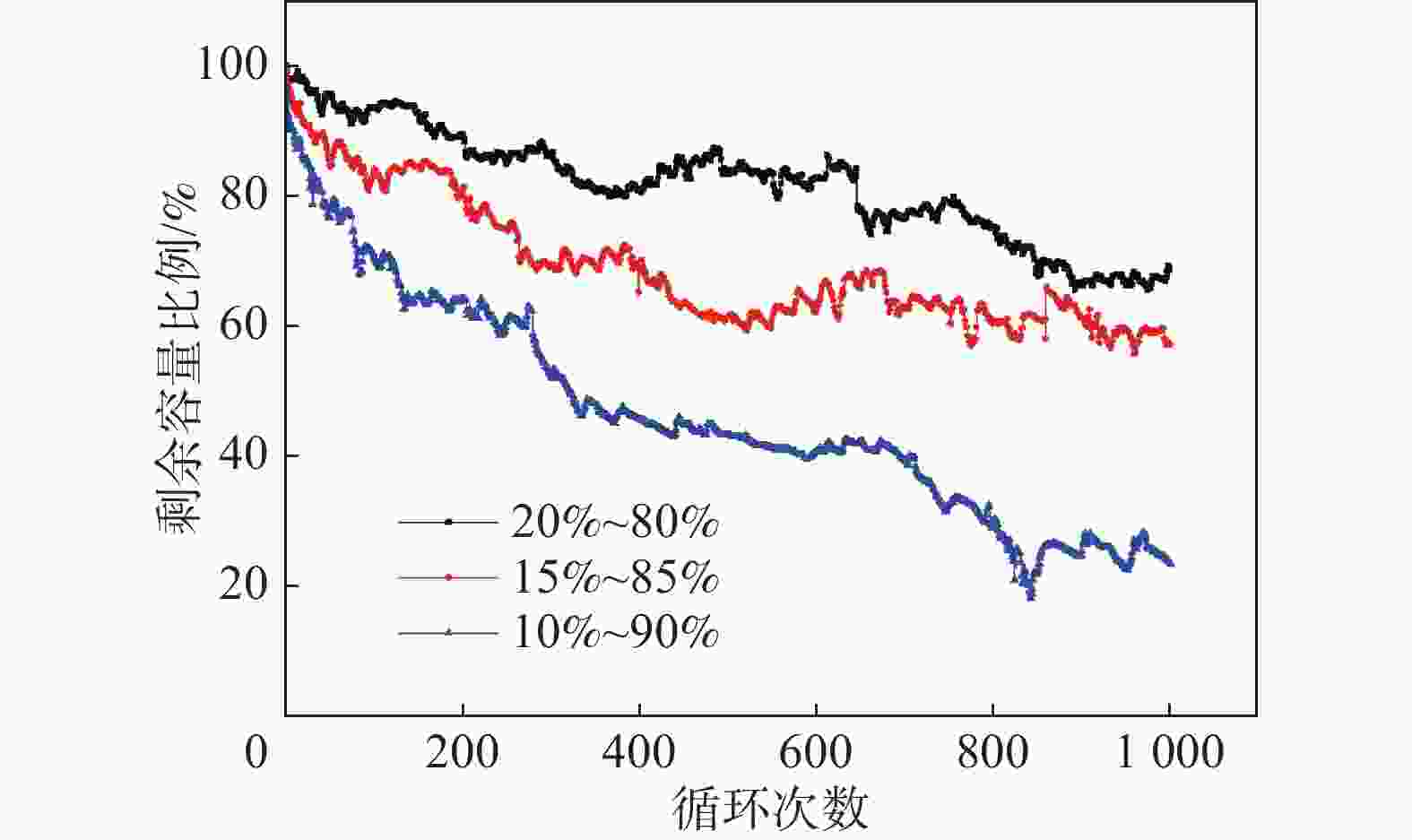

 DownLoad:
DownLoad:
